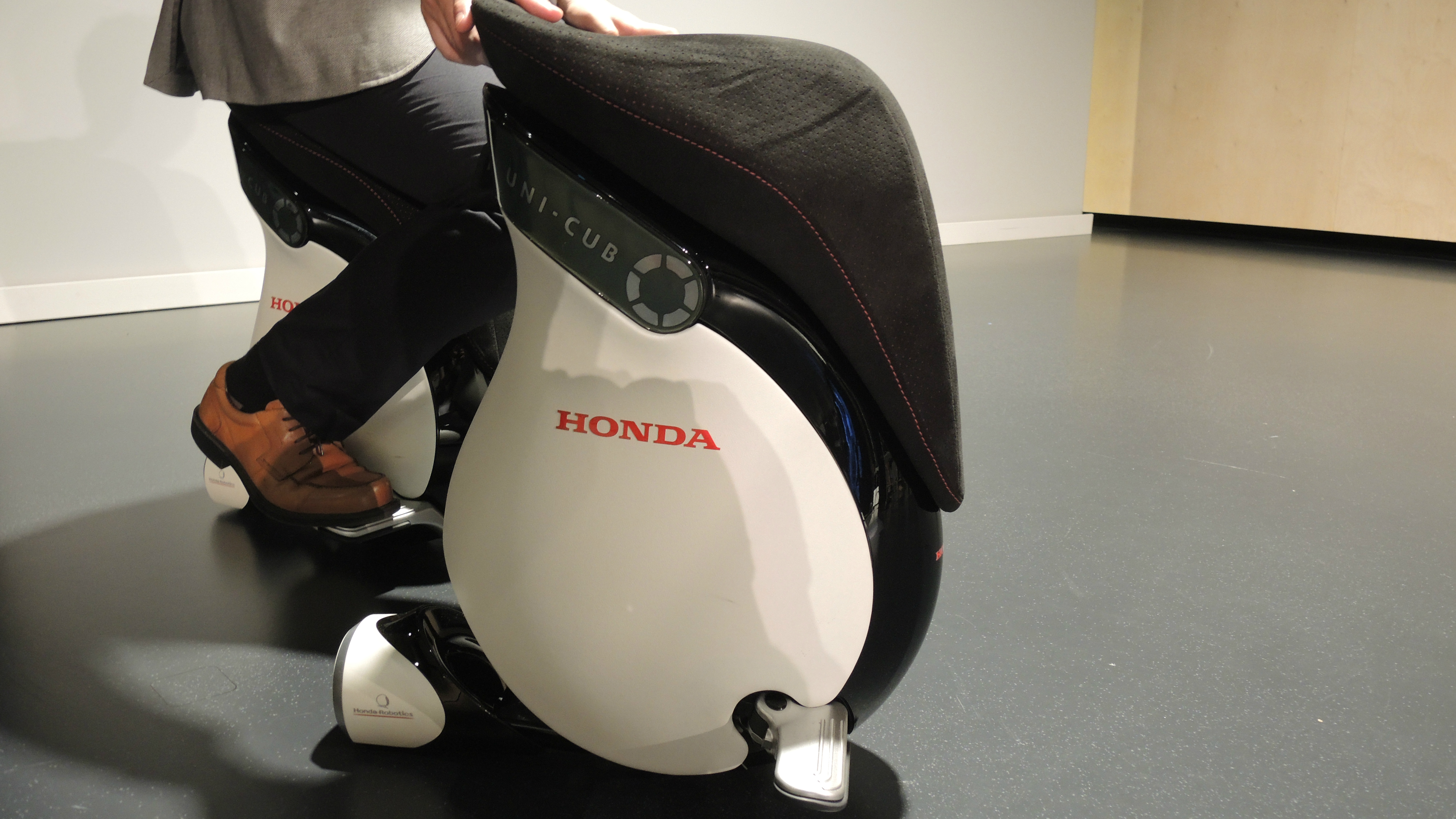Early Verdict
Not the best getaway vehicle, but a neat proposal for the future of personal mobility.
Pros
- +
Surprisingly comfortable
- +
Agile
- +
Easy to master
Cons
- -
Looks like you're riding a penguin
- -
Getting on and off can be a bit hairy
Why you can trust TechRadar
An office chair that drives you home at the end of the day? That's probably not Honda's grand vision for its micro-transporter of the future, but it was just one of a hundred uses springing to my mind as it was wheeled into the room.
The Uni-Cub is an interesting take on the future of mobility that does away with steering wheels, handlebars, dashboards, and just about everything else. But it's one that, as I quickly discovered, I'm happy to get onboard with.
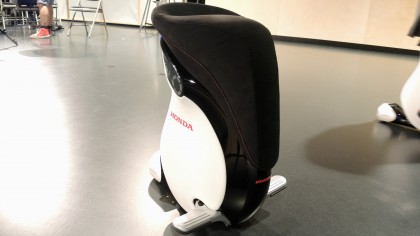
The micro machine has been through a number of iterations since Honda started working on it, the latest of which sees it more mobile and agile than ever. And though it looks like you're sitting on a fat robot penguin, it's surprisingly comfortable and easy to operate.
Movement is controlled by the "sitter" slightly shifting their body weight in their desired direction of travel - the more you lean the faster it goes. There's no accelerator. No brake. The idea of getting on this thing is admittedly a little daunting.
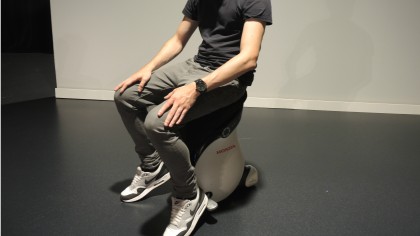
But the Cub can only hit a top speed of 6kmph and I discovered that the only slightly tricky part is getting on and off. The self-stabilising technology, taken from Honda's research into bipedal humanoid robots, means the vehicle adjusts itself as you try to sit down, causing a teeny bit of wobble if you don't sit down perfectly straight. But this also allows it to sit still when riderless.
There are a couple of foot pedals that provide both balance and comfort, and actually, it's a lot harder to fall off than you would think.
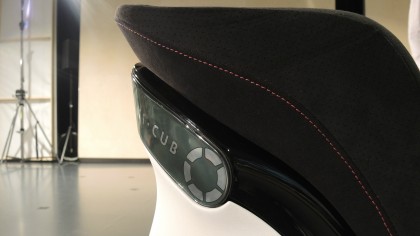
The ease in turning corners and changing direction is what surprised me most. That's thanks to one large-diameter wheel covered in a load of small-diameter wheels, called the Omni Traction Drive System, which sits in the back and gives the Uni-Cub a 360 range of movement.
The best trick, I found, was to look in the direction we wanted to move and my body would tend to follow.
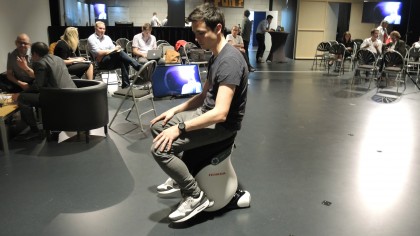
Zipping around a room of journalists and Honda execs I felt and looked a tad ridiculous. But judge me all you want, one day you'll all be doing it.
That's the end goal, anyway. Right now Honda's plan is to see the Uni-Cub eventually used in public places such as exhibitions, museums and libraries. It's in giving users the freedom of their hands that the Uni-Cub separates itself from existing forms of micro-transport like the humble segway.
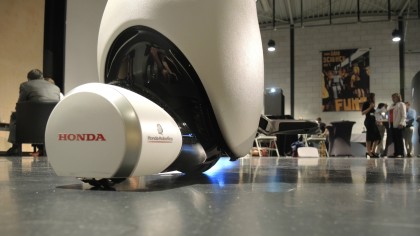
The only downside is that there's no backrest, and you'll need to maintain a good posture to make sure your centre of gravity is spot on. Creator Shinichiro Kobashi told me that Honda is looking into geriatric use. "We could add armrests, backrests, so those people can more easily use and manoeuvre this device," he told me.
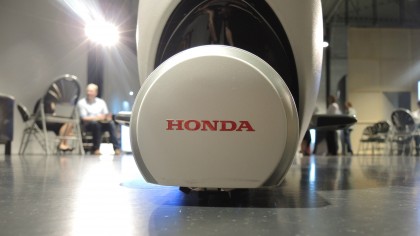
It's still in the test stages so don't expect to see granny zipping to the shops on one any time soon. However, Kobashi said that Honda would like to see them make their first proper public appearance at the 2020 Tokyo Olympic games.
Six years might sound like a long time away, but "building awareness and acceptability" is key, rather than just dropping it on the market overnight, he said.
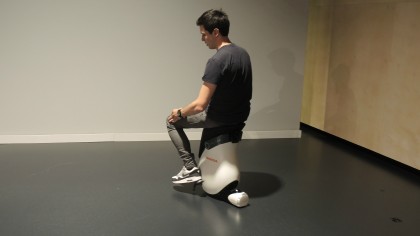
I challenged Kobashi to a race. He obliged. Next thing I knew we were doing doughnuts around the Honda studio. Very slow, awkward donuts from the future. And I was absolutely loving it.
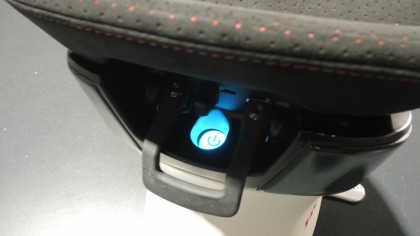
I'd only been riding the Uni-Cub for a few minutes and already felt confident that, even at 6kph, I could make a successful escape. However the ensuing police chase would have been too anticlimactic to make it worth it, so I decided to call it a day. But perhaps that's the best thing about it: just about anyone can jump on and feel comfortable using it with very little practice.
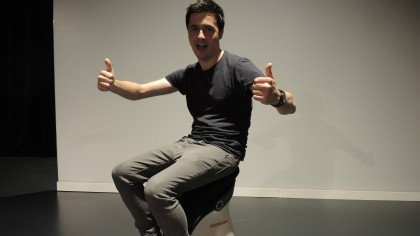
Then I hit Kobashi with a journalistic bombshell: could ASIMO ride the Uni-Cub? "Well we have the balancing technology from the Cub and the balancing technology from ASIMO, so it should work…"
That's all I needed to hear.
Hugh Langley is the ex-News Editor of TechRadar. He had written for many magazines and websites including Business Insider, The Telegraph, IGN, Gizmodo, Entrepreneur Magazine, WIRED (UK), TrustedReviews, Business Insider Australia, Business Insider India, Business Insider Singapore, Wareable, The Ambient and more.
Hugh is now a correspondent at Business Insider covering Google and Alphabet, and has the unfortunate distinction of accidentally linking the TechRadar homepage to a rival publication.
What is a hands on review?
Hands on reviews' are a journalist's first impressions of a piece of kit based on spending some time with it. It may be just a few moments, or a few hours. The important thing is we have been able to play with it ourselves and can give you some sense of what it's like to use, even if it's only an embryonic view. For more information, see TechRadar's Reviews Guarantee.
